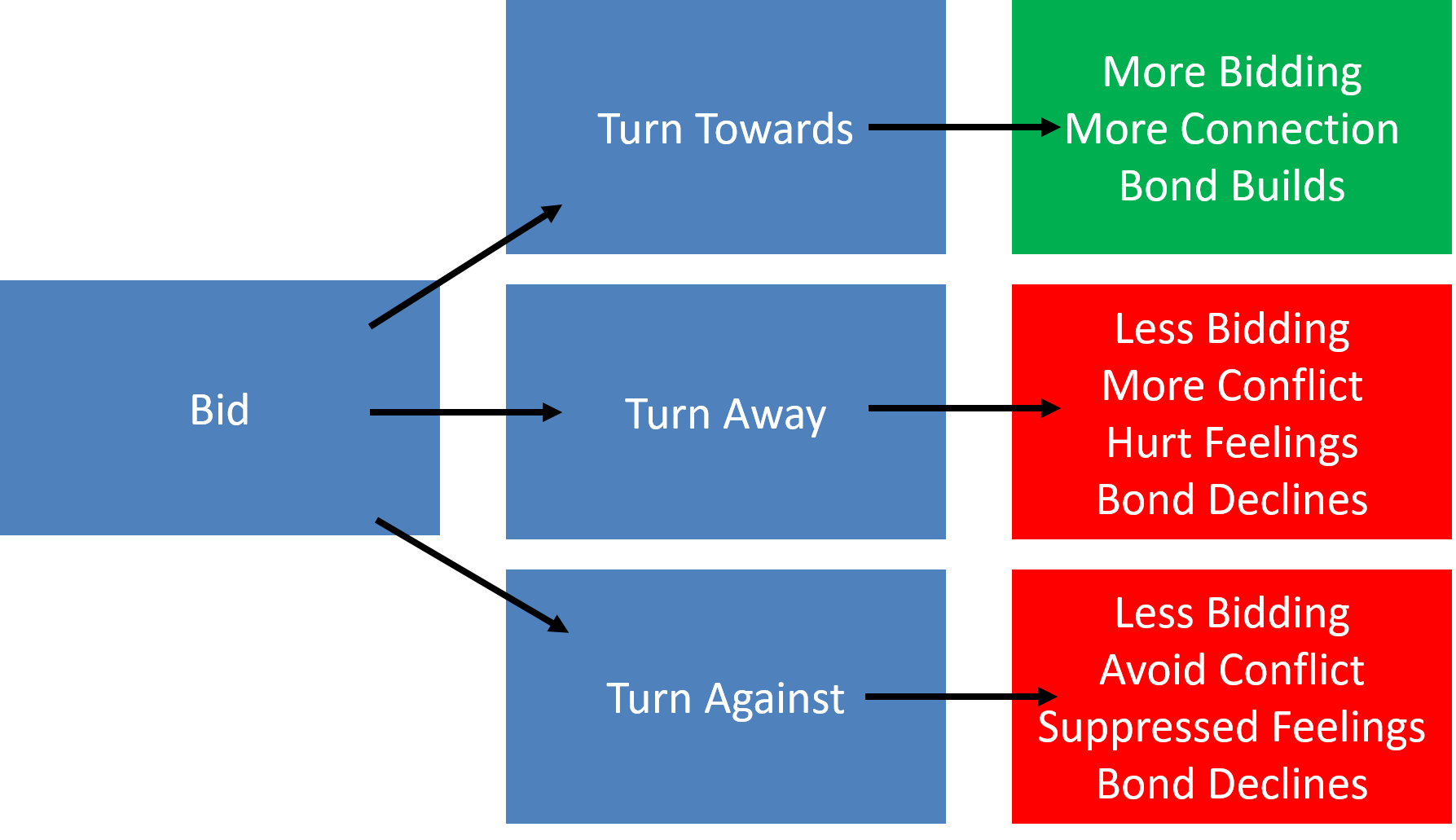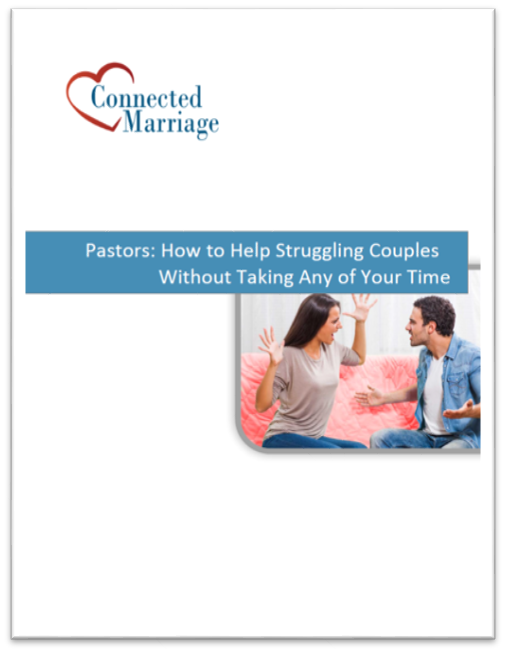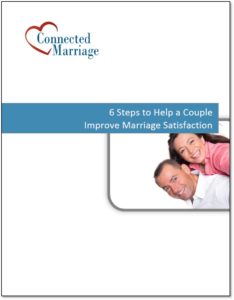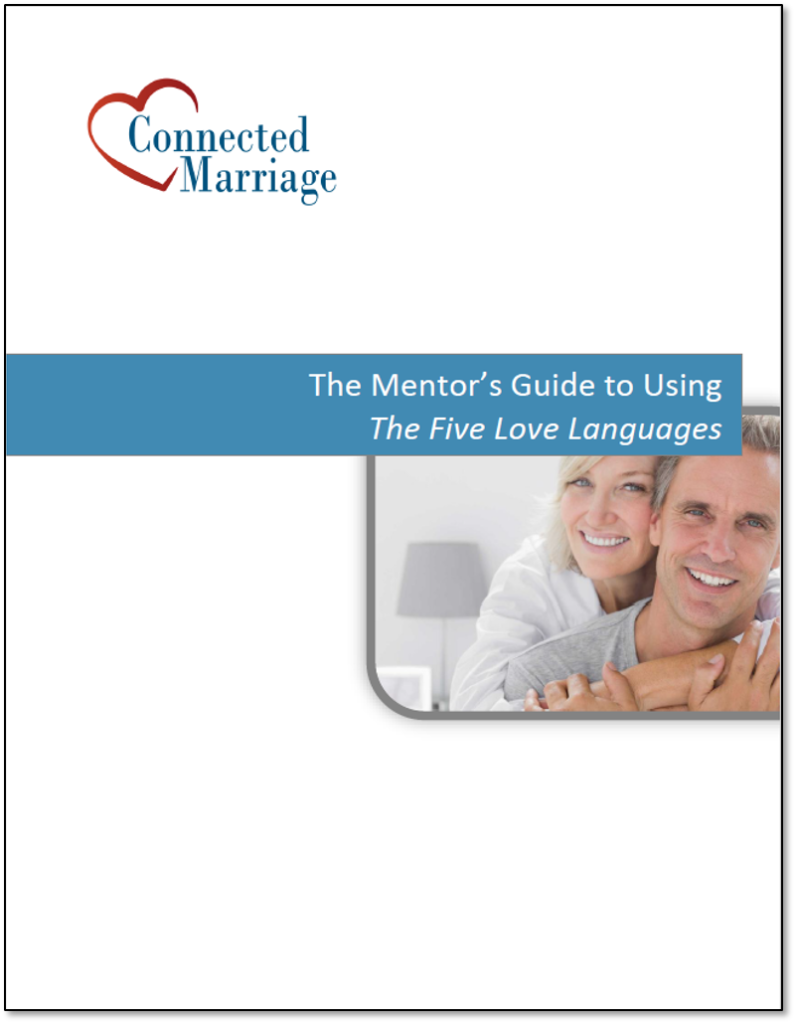Turn Toward, Turn Away, or Turn Against
Last week I asked my wife when we could go for a walk, and she didn’t like it. We had a fight about it. This is unusual. My wife loves to go for a walk with me, and we do this almost every day. Since she has been working from home during COVID, we can often get out over lunch.
A little annoyed, she replied, “I don’t know yet.”
How did I respond? I said something like, “What’s up with you?” To me, my request was a regular, almost an everyday request. I guess it came out as accusatory.
She heard, “Why can’t you do what I want when I want it?” To her, I was adding pressure to an already pressure-filled day.
When she snapped back at me, I snapped back at her.
Later, after we had both cooled down, we did talk it through, and we both understood what happened.
These kinds of little incidences and really can tear a relationship apart if they are not resolved.
It says in I Corinthians 13 that love is kind. Did we treat each other with kindness?
I appreciate how Dr. John Gottman explains this in his book, The Relationship Cure. He calls any type of reaching out to your spouse a bid. In other words, when I asked Michelle to go for a walk, this was a bid for connection. When you talk to your partner, you are asking for a response in some way.
We have three options. Each of those has consequences. We can turn towards, turn away, or turn against.

Turn Towards
Our best response is to turn towards. We can do this with different levels of enthusiasm.
Let’s say my wife turns to me and says, “Will you bring me the salt shaker?”
I could say without any emotion, “Uh-huh.” Or, I could say with excitement, “I’d love to.”
Either of these responses is turning towards. I would be accepting my wife’s bid for attention and showing her that I am engaged with her. Even if I said, “Give me a minute and I will.” That is still turning towards.
The result of turning towards is that she will know I am there for her. She will know that she can turn towards me and find a receptive partner. She is more likely to make more bids, and connection and trust grows.
Turn Away
A negative way to react would be to turn away. So, let’s try this again.
She asks, “Will you bring me the salt shaker?”
I reply, “I’m busy.”
I have just communicated to her that I am not there for her. I am choosing something else over her. I am not committing that I will ever bring her the salt shaker.
The result of me turning away is that she feels that she is not important. She might be feeling rejected. Her feelings may be hurt. She may resort to more criticism or more conflict. She may be less likely to try again. Our marriage bond declines.
Turn Against
A far more negative way to react is to turn against.
She asks, “Will you bring me the salt shaker?”
I reply, “Get it yourself.”
Or, worse, “You’re so lazy.”
When we are punished or criticized for asking for something from our partner, we are less likely to try again. Perhaps we avoid the conflict. Our feelings become suppressed. The end result is that our marriage bond declines. Maybe resentment and anger build up and then surface later in a negative manner.
Analyze an Interaction
When my wife and I got together and talked over our fight about going for a walk, we were able to break it down into the small steps that recreated what happened. We both know this material, and we both have gotten good at understanding each other’s emotions.
When I asked when we could go for a walk, she heard it in a way that was demanding. She has been feeling under pressure at work and, to her, it felt like I was putting more pressure on her. If I had stepped back and asked her if something was wrong, she would have expressed her anxiety. We would have gone down a different path.
When she didn’t answer me, I felt that she turned away. My response was to become critical and ask, “What’s wrong with you?”
My response wasn’t kind. She felt that I had turned against her.
We were able to break this discussion down into the small steps and talk about what each of us was feeling at the time. The concepts of turning toward, turning away, and turning against helped us to figure out what went wrong. We worked this through and resolved our negative interactions. After talking, we both felt better, and our connection was restored.
Tips for Marriage Mentors
- Recognize the patterns – When we work with struggling couples, we try to help them break down their interactions into the small steps and look at the pattern’s consequences. We want them to be able to choose a different response the next time something comes up.
- Use the language of turning toward, away, or against – I have found this language very easy to understand. We help couples to recognize how their dialog impacts each other.
- Talk about the consequences – We like to help couples to recognize the consequences of a particular action. For example, if I turn away, then my partner may feel rejected. They may be less likely to reach out again. I want couples to understand how their interactions are building their bond or tearing it down.
Reference:
Gottman, J. M., & DeClaire, J. (2002). The relationship cure: A five-step guide to strengthening your marriage, family, and friendships. New York: Harmony Books.





Great communication skills…….I wish my husband and I had them.
The good news is that communication is a skill that can be learned!
Phil, this is such a great message!!! Thank you for your depth and marriage perspective!
Thank you Shelly!